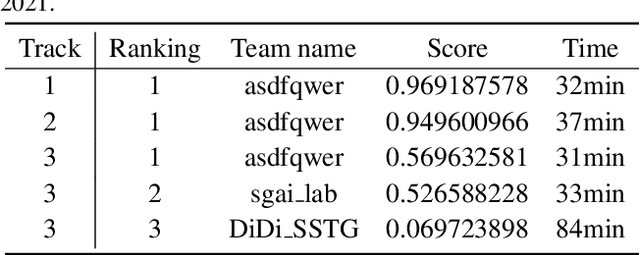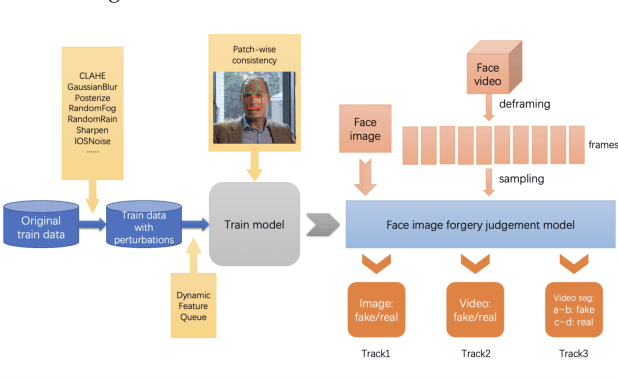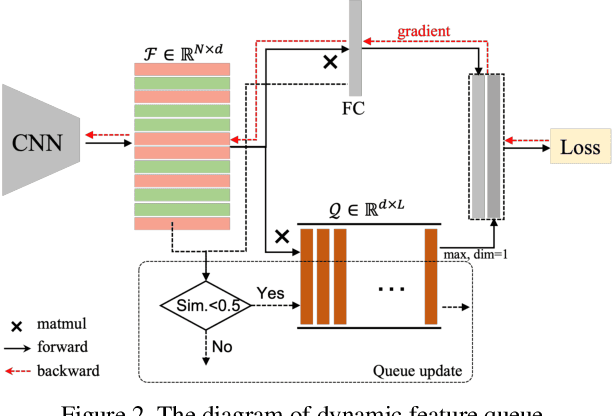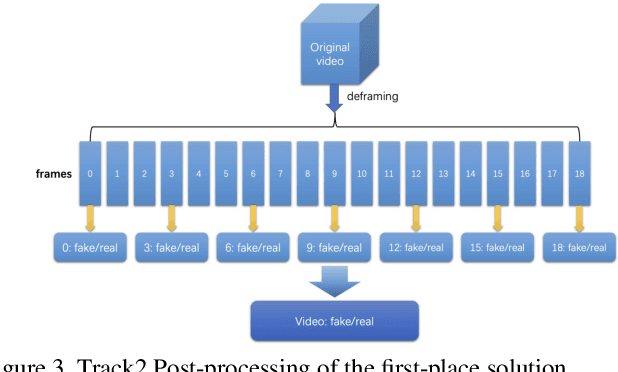Guosheng Zhang
Interpretable Face Anti-Spoofing: Enhancing Generalization with Multimodal Large Language Models
Jan 03, 2025



Abstract:Face Anti-Spoofing (FAS) is essential for ensuring the security and reliability of facial recognition systems. Most existing FAS methods are formulated as binary classification tasks, providing confidence scores without interpretation. They exhibit limited generalization in out-of-domain scenarios, such as new environments or unseen spoofing types. In this work, we introduce a multimodal large language model (MLLM) framework for FAS, termed Interpretable Face Anti-Spoofing (I-FAS), which transforms the FAS task into an interpretable visual question answering (VQA) paradigm. Specifically, we propose a Spoof-aware Captioning and Filtering (SCF) strategy to generate high-quality captions for FAS images, enriching the model's supervision with natural language interpretations. To mitigate the impact of noisy captions during training, we develop a Lopsided Language Model (L-LM) loss function that separates loss calculations for judgment and interpretation, prioritizing the optimization of the former. Furthermore, to enhance the model's perception of global visual features, we design a Globally Aware Connector (GAC) to align multi-level visual representations with the language model. Extensive experiments on standard and newly devised One to Eleven cross-domain benchmarks, comprising 12 public datasets, demonstrate that our method significantly outperforms state-of-the-art methods.
ALoRE: Efficient Visual Adaptation via Aggregating Low Rank Experts
Dec 11, 2024



Abstract:Parameter-efficient transfer learning (PETL) has become a promising paradigm for adapting large-scale vision foundation models to downstream tasks. Typical methods primarily leverage the intrinsic low rank property to make decomposition, learning task-specific weights while compressing parameter size. However, such approaches predominantly manipulate within the original feature space utilizing a single-branch structure, which might be suboptimal for decoupling the learned representations and patterns. In this paper, we propose ALoRE, a novel PETL method that reuses the hypercomplex parameterized space constructed by Kronecker product to Aggregate Low Rank Experts using a multi-branch paradigm, disentangling the learned cognitive patterns during training. Thanks to the artful design, ALoRE maintains negligible extra parameters and can be effortlessly merged into the frozen backbone via re-parameterization in a sequential manner, avoiding additional inference latency. We conduct extensive experiments on 24 image classification tasks using various backbone variants. Experimental results demonstrate that ALoRE outperforms the full fine-tuning strategy and other state-of-the-art PETL methods in terms of performance and parameter efficiency. For instance, ALoRE obtains 3.06% and 9.97% Top-1 accuracy improvement on average compared to full fine-tuning on the FGVC datasets and VTAB-1k benchmark by only updating 0.15M parameters.
Cyclically Disentangled Feature Translation for Face Anti-spoofing
Dec 07, 2022Abstract:Current domain adaptation methods for face anti-spoofing leverage labeled source domain data and unlabeled target domain data to obtain a promising generalizable decision boundary. However, it is usually difficult for these methods to achieve a perfect domain-invariant liveness feature disentanglement, which may degrade the final classification performance by domain differences in illumination, face category, spoof type, etc. In this work, we tackle cross-scenario face anti-spoofing by proposing a novel domain adaptation method called cyclically disentangled feature translation network (CDFTN). Specifically, CDFTN generates pseudo-labeled samples that possess: 1) source domain-invariant liveness features and 2) target domain-specific content features, which are disentangled through domain adversarial training. A robust classifier is trained based on the synthetic pseudo-labeled images under the supervision of source domain labels. We further extend CDFTN for multi-target domain adaptation by leveraging data from more unlabeled target domains. Extensive experiments on several public datasets demonstrate that our proposed approach significantly outperforms the state of the art.
ForgeryNet -- Face Forgery Analysis Challenge 2021: Methods and Results
Dec 15, 2021



Abstract:The rapid progress of photorealistic synthesis techniques has reached a critical point where the boundary between real and manipulated images starts to blur. Recently, a mega-scale deep face forgery dataset, ForgeryNet which comprised of 2.9 million images and 221,247 videos has been released. It is by far the largest publicly available in terms of data-scale, manipulations (7 image-level approaches, 8 video-level approaches), perturbations (36 independent and more mixed perturbations), and annotations (6.3 million classification labels, 2.9 million manipulated area annotations, and 221,247 temporal forgery segment labels). This paper reports methods and results in the ForgeryNet - Face Forgery Analysis Challenge 2021, which employs the ForgeryNet benchmark. The model evaluation is conducted offline on the private test set. A total of 186 participants registered for the competition, and 11 teams made valid submissions. We will analyze the top-ranked solutions and present some discussion on future work directions.
DFGC 2021: A DeepFake Game Competition
Jun 02, 2021



Abstract:This paper presents a summary of the DFGC 2021 competition. DeepFake technology is developing fast, and realistic face-swaps are increasingly deceiving and hard to detect. At the same time, DeepFake detection methods are also improving. There is a two-party game between DeepFake creators and detectors. This competition provides a common platform for benchmarking the adversarial game between current state-of-the-art DeepFake creation and detection methods. In this paper, we present the organization, results and top solutions of this competition and also share our insights obtained during this event. We also release the DFGC-21 testing dataset collected from our participants to further benefit the research community.
 Add to Chrome
Add to Chrome Add to Firefox
Add to Firefox Add to Edge
Add to Edge